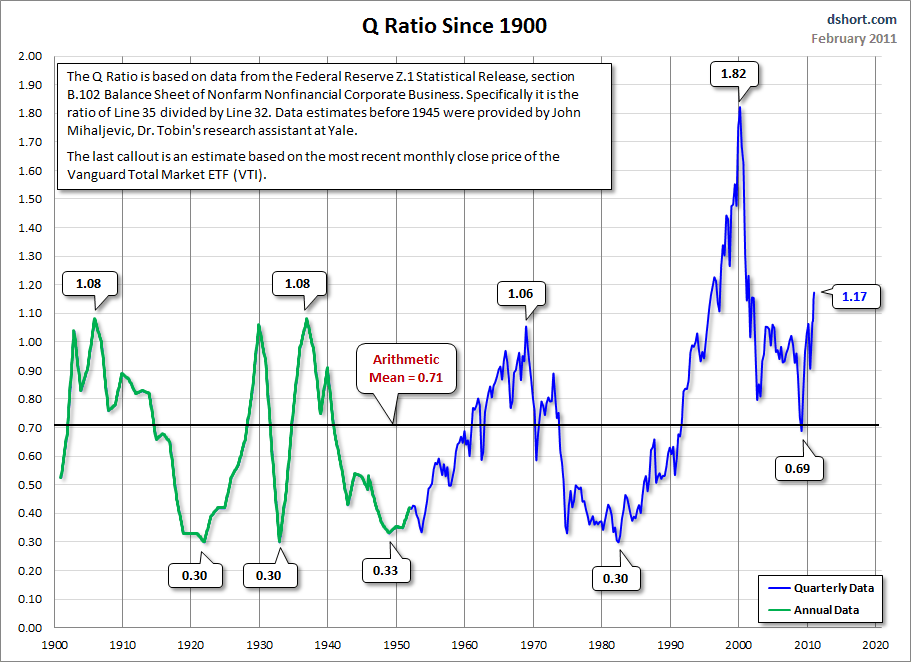The Q Ratio is a popular method of estimating the fair value of the stock market developed by Nobel Laureate James Tobin.
It’s a fairly simple concept, but laborious to calculate. The Q Ratio is the total price of the market divided by the replacement cost of all its companies.
Fortunately, the government does the work of accumulating the data for the calculation. The numbers are supplied in the Federal Reserve Z.1 Flow of Funds Accounts of the United States, which is released quarterly.
The first chart shows Q Ratio from 1900 to the present. I’ve extrapolated the ratio since the latest Fed data (through 2010 Q3) based on the price of VTI, the Vanguard Total Market ETF.
Interpreting the Ratio
The data since 1945 is a simple calculation using data from the Federal Reserve Z.1 Statistical Release, section B.102., Balance Sheet and Reconciliation Tables for Nonfinancial Corporate Business. Specifically it is the ratio of Line 35 (Market Value) divided by Line 32 (Replacement Cost). It might seem logical that fair value would be a 1:1 ratio. But that has not historically been the case. The explanation, according to Smithers & Co. (more about them later) is that “the replacement cost of company assets is overstated. This is because the long-term real return on corporate equity, according to the published data, is only 4.8%, while the long-term real return to investors is around 6.0%. Over the long-term and in equilibrium, the two must be the same.”

